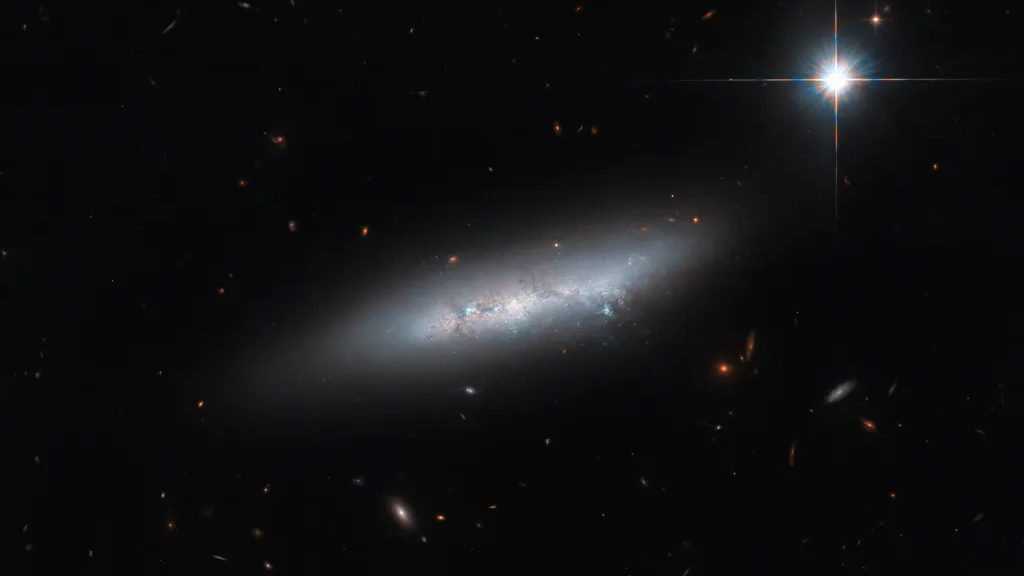Hubble Space Telescope zooms in on member of galactic quartet (image)
A member of a galactic quartet steals the show in a new image from the Hubble Space Telescope.

A member of a galactic quartet steals the show in a stunning new image from the Hubble Space Telescope.
The irregular galaxy, NGC 2814, takes center stage in the new Hubble view, which excludes its three nearby companion galaxies. Together, the four neighboring galaxies comprise a galactic group named Holmberg 124.
"The galaxy appears to be quite isolated: visually, it looks a little like a loose stroke of bright paint across a dark background," NASA officials said in a statement releasing the new Hubble photo. "However, looks can be deceiving."
Related: The best Hubble Space Telescope images of all time!
Located roughly 85 million light-years from Earth, NGC 2814 lacks a distinct shape with neither a central bulge nor any trace of spiral arm structures. The Hubble view captures a beautiful snapshot of the galaxy as it glimmers with bright blue stars in its active regions of star formation and exhibits a glowing halo of dust and gas.
The other members of Holmberg 124 (not captured in the Hubble image) include a side-on spiral galaxy known as NGC 2820, an irregular galaxy named IC 2458 and a face-on, non-barred spiral galaxy called NGC 2805, according to the statement.
These galaxies — being of spiral and irregular structure — have often been referred to as "late-type galaxies," whereas elliptical galaxies are generally referred to as "early-type." This classification stems from a common misconception about galactic evolution, whereby galaxies are mistakenly thought to transition from an elliptical — which exhibit very little organization or structure — to an intermediate lenticular structure and then to either a barred or regular spiral galaxy situation.
Get the Space.com Newsletter
Breaking space news, the latest updates on rocket launches, skywatching events and more!
"It is still quite widely believed that Edwin Hubble inaccurately thought that elliptical galaxies were the evolutionary precursors to spiral and irregular galaxies," NASA officials said in the statement. "This misconception is due to the Hubble tuning fork of galactic classification, which visually shows galaxy types proceeding from elliptical to spiral, in a sequence that could easily be interpreted as a temporal evolution."
However, the terms early-type and late-type were actually adopted from much older astronomical terminology for stellar classifications and were not intended to imply ellipticals were evolutionary precursors to spiral and irregular galaxies. Nonetheless, the misunderstanding persists almost a hundred years later.
"In fact, [Hubble] explicitly said in a 1927 paper that ‘the nomenclature … [early and late] … refers to position in the sequence, and temporal connotations are made at one’s peril," NASA officials said in the statement.
The photo of NGC 2814 was taken using Hubble's Advanced Camera for Surveys and was shared online on Dec. 15.
Join our Space Forums to keep talking space on the latest missions, night sky and more! And if you have a news tip, correction or comment, let us know at: community@space.com.

Samantha Mathewson joined Space.com as an intern in the summer of 2016. She received a B.A. in Journalism and Environmental Science at the University of New Haven, in Connecticut. Previously, her work has been published in Nature World News. When not writing or reading about science, Samantha enjoys traveling to new places and taking photos! You can follow her on Twitter @Sam_Ashley13.









